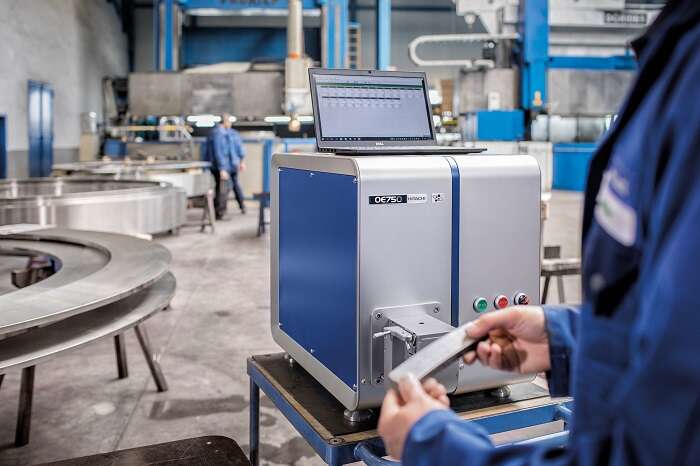I recently presented a webinar on automotive trends changing material analysis and how you can be ready with Quality Digest magazine. During this webinar we asked a few questions, and it was interesting to find out that more than 50% of participants felt that new automotive trends related to light weighting were affecting their day to day operations already. However, over 75% said they were not yet using spark OES (optical emission spectrometer), LIBS (laser induced breakdown spectrometer) or XRF (X-ray fluorescence) PMI (positive material identification) analyzers to meet material specifications.
The automotive industry has very exacting requirements for components – perhaps second only to aerospace. Safety is a huge issue and many components need to absorb energy on impact. Other components need to be structurally rigid and therefore the focus is more on strength. The role of incoming inspection and using spectrometers for metal analysis is becoming more and more important especially as new materials are introduced throughout the supply chain.
Aluminium and magnesium alloys have recently won favour in the automotive industry because they’re light, relatively low-cost and give many of the required properties. They can be formed into complex shapes including engine components, gearbox housings and structural parts. Even in the current environment, the legislation driving the need for lighter-weight metal is here to stay, and the development for these lighter-weight metals will continue, albeit possibly at a slower rate in the near-future until the economies around the world recover and manufacturing ramps up.
Coming in at around one third of the weight of steel, use of aluminium in cars has skyrocketed in recent years. That trend is set to continue for some time: by 2022 the average car is expected to contain almost 100kg of aluminium that have replaced heavier parts. This means that the automotive industry will make up a quarter of all aluminium consumption, that’s 30 million tonnes, by 2025.

Magnesium is even lighter than aluminium – 36% per unit lighter. It also has the highest strength to weight ratio of all the structural metals. It’s abundant and easily recyclable, so it’s not surprising that since it’s early use for wheels, magnesium is replacing steel and aluminium in housings and space frames. Right now, over half of all magnesium is used in alloys with aluminium. Cast Mg-Al alloys are used for many parts, including transmission and clutch housings, as well as steering wheels and support brackets, among others.
However, magnesium does have a few drawbacks. It’s brittle and doesn’t have the creep resistance of aluminium. However, research teams worldwide are working on this. A team at Monash University in Melbourne, Australia have created a process that changes the microstructure of magnesium to make it less brittle. This means that pure magnesium can be formed and compressed to any shape at room temperature without cracking. Another team in at the U.S. Department of Energy have developed a process that improves the energy absorption and ductility of magnesium, making it more feasible for a larger range of car parts.
If you thought that steelmakers were sitting idle, watching their industry whittle away, think again. Steel is a reliable, abundant, well-known material and steelmakers have been working hard to win back some of the market share lost to the new kids on the block.
Steelmakers are looking to develop super-lightweight steel that is stronger, cheaper and almost as lightweight as aluminium. And they are just about there, with new products expected to arrive on the market in 2021, if not earlier. It’s going to be hard to resist the allure of better strength and lower cost, so the predictions based on a growing aluminium and magnesium market could be upset if steel raises its game as much as it suggests.
In the development of new alloys – and meeting the exacting specifications of current supplies – analysing the melt to ppm levels is crucial. Hitachi High-Tech’s latest spark spectrometer for metal identification offers a level of analysis never before seen in an OES analyzer in this class.
The OE750 covers the entire range of metals at the lowest detection limits, delivering the performance of much more expensive instrument. It’s designed to support QA/QC programmes by verifying tramp and trace elements at incoming inspection, and meeting a range of standards, such as the ASTM E415 and E1086 for steel.
You can find out more about the OE750 here>
Want to know more about how the automotive sector is changing in your region? Or the effect of EVs on metals suppliers? Or the emerging regulations that will have profound affects across the automotive supply chain?
Download our Essential Guide: ‘Analysis in Automotive: What you need to know to stay ahead’ or watch my webinar on ‘Automotive trends changing material analysis and how you can be ready’ on-demand.
About the author
Mikko Järvikivi is the Head of Global Product Management at Hitachi High-Tech Analytical Science. With 15 years’ experience in material analysis and handheld instruments, Mikko holds a M.Sc (Tech.) in Chemical Engineering from Aalto University in Finland.
Get in touch with us today